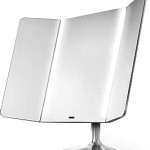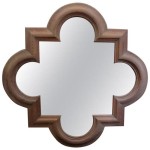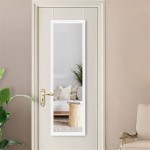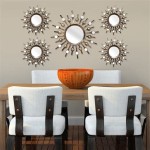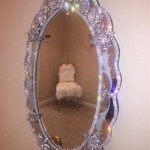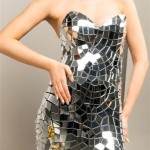Blue Glass Mirror
Blue glass mirrors, characterized by their subtle blue tint, represent a specific type of mirror with unique properties and applications. While seemingly simple, their production involves a complex interplay of materials science and manufacturing processes. Understanding these complexities allows for informed decisions regarding their selection and utilization.
The blue tint originates from the specific composition of the glass substrate. Standard clear glass often contains small amounts of iron oxide, which can impart a slight greenish tinge. In blue glass mirrors, specific additives are introduced during the molten glass phase to neutralize this green hue and introduce a desired blue tone. These additives, often containing cobalt or other metal oxides, absorb specific wavelengths of light, resulting in the perceived blue color. The precise concentration and combination of these additives determine the final shade of blue achieved.
The manufacturing process for blue glass mirrors follows the general principles of mirror production, with specific adaptations to accommodate the unique properties of the blue glass substrate. The process begins with carefully preparing the glass surface. This involves cleaning and polishing the glass to remove any imperfections that could distort the reflection. A smooth, flawless surface is paramount for achieving a high-quality reflective surface.
Once prepared, the glass substrate undergoes a silvering process. This involves depositing a thin layer of silver onto the back surface of the glass. The silver layer acts as the reflective surface, bouncing light back to create the mirror image. This silvering process is highly controlled to ensure even deposition and optimal reflectivity. A protective layer of copper is typically applied over the silver to prevent oxidation and enhance the mirror's durability.
Following the silvering and copper application, several layers of paint are applied to further protect the metallic layers from environmental damage and enhance the mirror's overall robustness. These paint layers also serve to seal the back of the mirror, preventing moisture and other contaminants from reaching the reflective silver layer. The specific type and number of paint layers can vary depending on the intended application of the mirror.
Blue glass mirrors find applications in diverse fields, including interior design, architecture, and scientific instrumentation. In interior design, their unique aesthetic qualities make them a desirable choice for decorative purposes. The blue tint can complement specific color palettes and create a sense of depth and coolness. They can be incorporated into furniture, wall décor, and other design elements.
In architectural applications, blue glass mirrors can contribute to a building's overall aesthetic and energy efficiency. When used as part of exterior cladding or window treatments, the reflective properties of blue glass can reduce solar heat gain, thereby lowering cooling costs. The blue tint can also enhance the building's visual appeal, adding a touch of sophistication and modernity.
Scientific instruments also utilize blue glass mirrors for their specific optical properties. The controlled reflection and absorption of light wavelengths make them suitable for use in optical filters, lasers, and other scientific equipment. The ability of blue glass to absorb certain wavelengths can be essential for isolating specific wavelengths of light for analysis or manipulation.
The reflectivity of blue glass mirrors, a crucial aspect of their performance, is influenced by several factors. The quality of the silvering process plays a significant role, with a more uniform and thicker silver layer generally resulting in higher reflectivity. The smoothness of the glass substrate also influences reflectivity, as imperfections can scatter light and reduce the clarity of the reflected image.
The specific shade of blue also affects reflectivity, as different shades absorb varying amounts of light. Darker shades of blue tend to absorb more light, resulting in slightly lower reflectivity compared to lighter shades. The presence of any protective coatings, such as the copper layer and paint layers, can also marginally impact reflectivity. Manufacturers carefully control these factors to achieve the desired reflectivity for specific applications.
Selecting the appropriate blue glass mirror requires consideration of various factors, including the desired shade of blue, the intended application, and the required reflectivity. For decorative applications, the aesthetic appeal of the blue tint is a primary consideration. For architectural applications, energy efficiency and reflectivity are crucial factors. Scientific applications require precise control over reflectivity and light absorption characteristics.
The size and shape of the mirror are also essential considerations, as these factors can influence the overall design and functionality. The availability of custom sizes and shapes allows for greater flexibility in incorporating blue glass mirrors into specific projects. Understanding these factors and consulting with manufacturers or suppliers can ensure the selection of the most appropriate blue glass mirror for a given application.
The durability and maintenance of blue glass mirrors are also important considerations. While the protective layers applied during manufacturing enhance durability, proper care is essential to maintain the mirror's appearance and functionality. Cleaning should be performed with appropriate cleaning solutions and techniques to avoid scratching the surface or damaging the reflective layer. Avoiding exposure to harsh chemicals and extreme temperatures can also prolong the lifespan of the mirror.
Color Mirror

Round Blue Glass Mirror Art Deco Style Wall A Handmade From Mirrorcoop Singapore

China 2 12mm Coated Tinted Float Blue Silver Mirror Glass Made In Com

4mm Large Sheet Dark Blue Tinted Mirror Glass China Colored Made In Com

Round Mirror Blue Art Deco Wall Made With Hand Tinted Glass Unique Mirrors

1 8 Thick Color Mirrored Acrylic Plexiglass Sheet Delvie S Plastics Inc

3mm Plaskolite Blue 2069 Mirror Acrylic Sheet Perspex Plastic Signmaterialsdirect Com

Tinted Mirrors Mirrorworld

Large Stained Glass Mirror In Blue Aqua

Roulette Piaggi Blue Glass Mosaic Round Mirror Mirrors

